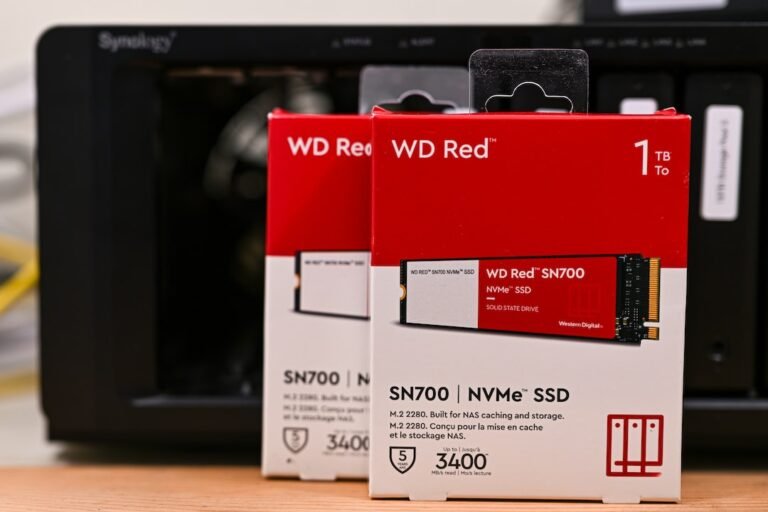Introduction
Are you frustrated with the dead spots in your home where your Wi-Fi signal drops out? Do you experience lag or buffering when streaming movies or playing online games? If so, you’re not alone. Many people struggle with network coverage and performance issues in their homes, but there are solutions available to help enhance your Wi-Fi experience.
In this article, we will explore the concept of router integration and mesh Wi-Fi systems, which can significantly improve your network coverage and performance. We’ll discuss how these technologies work, their benefits, and how you can implement them in your own home. So let’s dive in and get your network up to speed!
What is Router Integration?
Router integration refers to the process of combining multiple routers or access points within your home network to create a unified and robust Wi-Fi coverage. Traditional routers, while effective in smaller homes or apartments, may have limitations when it comes to larger or multi-story homes. With router integration, you can extend the reach of your Wi-Fi signal and eliminate dead zones.
By strategically placing additional routers or access points throughout your home, you create a mesh network that provides seamless Wi-Fi coverage in every corner. This means you can stream videos, browse the web, and connect to smart devices from anywhere in your home without experiencing signal drops or slowdowns.
How Does Router Integration Work?
Router integration works by extending your Wi-Fi network through the use of additional routers or access points. These devices are connected to your main router via wired or wireless connections, depending on the setup. The additional routers or access points communicate with each other and your main router, creating a mesh network that blankets your home with a strong and reliable Wi-Fi signal.
When you move from one area of your home to another, your device automatically connects to the nearest access point, ensuring a seamless transition without any interruption in your connection. This intelligent system allows you to move freely around your home without worrying about signal degradation or disconnection.
Benefits of Router Integration
Router integration offers several benefits that can greatly enhance your network coverage and performance. Here are some of the key advantages:
Expanded Coverage: By adding multiple routers or access points, you can extend the reach of your Wi-Fi signal to eliminate dead spots throughout your home. Whether you’re in the basement, on the top floor, or in the backyard, you’ll have a strong and stable Wi-Fi connection.
Improved Performance: With router integration, you can distribute the network load across multiple devices, reducing congestion and improving overall performance. This means faster internet speeds, less buffering, and lag-free online gaming and streaming.
Seamless Roaming: Moving around your home becomes effortless with router integration. Your devices seamlessly connect to the closest access point, ensuring uninterrupted connectivity as you move from room to room.
Easy Set-up: Setting up a router integration system can be relatively simple, especially with the availability of user-friendly mobile apps. Many routers come with step-by-step instructions and intuitive interfaces, making the installation process hassle-free.
Scalability: Router integration systems are highly scalable, allowing you to expand your network as needed. Whether you want to add more access points or upgrade to a more powerful router, you have the flexibility to adapt your system to your changing needs.
What is Mesh Wi-Fi?
Mesh Wi-Fi takes router integration to the next level by offering a more advanced and seamless solution for extending your network coverage. Unlike traditional router integration systems, which rely on a primary router and multiple access points, mesh Wi-Fi systems consist of multiple identical nodes that work together to create a unified network.
Each node in a mesh Wi-Fi system functions as a router and access point simultaneously, providing a full Wi-Fi signal throughout your home. These nodes communicate with each other to form a mesh network, intelligently routing traffic and optimizing signal strength.
How Does Mesh Wi-Fi Work?
Mesh Wi-Fi systems use a wireless backhaul to communicate between nodes, ensuring a strong and reliable connection. The nodes are strategically placed throughout your home, and they work together to create a mesh network that delivers a seamless Wi-Fi experience.
When you connect a device to your mesh Wi-Fi network, it automatically selects the best node to connect to based on signal strength and availability. This ensures that you are always connected to the strongest and fastest Wi-Fi signal, regardless of your location in your home.
Benefits of Mesh Wi-Fi
Mesh Wi-Fi systems offer several advantages over traditional router integration. Here are some of the key benefits:
Expanded Coverage: Mesh Wi-Fi systems ensure complete network coverage in even the largest homes. The multiple nodes work together to create a seamless network that eliminates dead spots and provides consistent Wi-Fi coverage throughout your entire property.
Self-Healing: If one node in your mesh Wi-Fi system goes offline, the other nodes automatically pick up the slack, ensuring there is no interruption in your network coverage. This self-healing feature makes mesh Wi-Fi systems incredibly reliable.
Intelligent Routing: Mesh Wi-Fi systems intelligently route traffic to ensure optimal performance. By dynamically adjusting the network paths, these systems can deliver faster internet speeds and reduce congestion.
Simplified Management: Many mesh Wi-Fi systems come with easy-to-use mobile apps that allow you to manage and monitor your network from anywhere. You can easily set up guest networks, monitor device usage, and even prioritize certain devices or applications for maximum performance.
Scalability: Just like router integration, mesh Wi-Fi systems are highly scalable. You can add additional nodes to your existing system to expand coverage further or adapt your setup to accommodate changes in your home or network requirements.
Implementing Router Integration and Mesh Wi-Fi in Your Home
Now that you understand the benefits and functionalities of router integration and mesh Wi-Fi, you may be wondering how to implement these solutions in your own home. Here are some steps to get you started:
Assess Your Needs: Evaluate the size of your home and the current state of your network coverage. Identify areas with weak signals or dead spots and determine the number of additional routers or access points you may need.
Choose the Right Equipment: Research and select the routers or mesh Wi-Fi systems that best suit your needs. Consider factors such as coverage, performance, ease of use, and scalability.
Placement: Determine the optimal placement for your additional routers or mesh Wi-Fi nodes. Strategically position them throughout your home to ensure comprehensive coverage and maximum signal strength.
Configuration: Follow the manufacturer’s instructions to set up your additional routers or mesh Wi-Fi nodes. Most systems come with intuitive mobile apps or web interfaces that guide you through the process.
Network Optimization: Fine-tune your network settings to optimize performance. Explore features such as Quality of Service (QoS), which allows you to prioritize certain devices or applications for a better experience.
Testing: After setting up your router integration or mesh Wi-Fi system, thoroughly test your network performance. Measure internet speeds, check for dead zones, and ensure seamless roaming between access points.
By following these steps, you can overcome network coverage and performance issues and enjoy a robust and reliable Wi-Fi experience throughout your home.
Conclusion
Router integration and mesh Wi-Fi systems provide effective solutions for enhancing your network coverage and performance. Whether you choose to integrate multiple routers or implement a mesh Wi-Fi system, these technologies can eliminate dead spots, improve performance, and provide a seamless Wi-Fi experience in your home.
By strategically placing additional routers or mesh Wi-Fi nodes, you can extend the reach of your Wi-Fi signal and create a robust network that covers every corner of your property. These systems offer scalability, simplified management, and improved performance, making them an ideal choice for homes of all sizes.
So why settle for subpar Wi-Fi coverage when you can optimize your network with router integration or mesh Wi-Fi? Upgrade your home network today and say goodbye to buffering, lag, and dead zones!
FAQ
To help you further understand router integration and mesh Wi-Fi, here are answers to some common questions:
| Question | Answer |
|---|---|
| What is the difference between router integration and mesh Wi-Fi systems? | Router integration involves adding multiple routers or access points to extend Wi-Fi coverage. Mesh Wi-Fi systems consist of multiple nodes that work together to create a unified network. |
| How many routers or mesh Wi-Fi nodes do I need for my home? | The number of routers or nodes you need depends on the size and layout of your home. Larger homes may require more devices to ensure comprehensive coverage. |
| How do I set up a router integration system? | Setting up a router integration system involves connecting additional routers or access points to your main router and configuring them to extend your Wi-Fi network. |
| Are mesh Wi-Fi systems easy to manage? | Yes, most mesh Wi-Fi systems come with user-friendly mobile apps or web interfaces that allow you to easily manage and monitor your network. |
| Can I use a combination of router integration and mesh Wi-Fi? | Yes, you can use a combination of router integration and mesh Wi-Fi to create a customized solution that meets your specific needs. |
For more information on home network setup or troubleshooting router issues, check out our resources on home-network-setup and router troubleshooting.
Further Reading
For more in-depth information on routers, Wi-Fi, and home network setups, check out the following resources:
| Website | Description |
|---|---|
| www.wirelesshack.org | A comprehensive website providing guides, tips, and reviews on various wireless networking topics, including router integration and mesh Wi-Fi. |
| www.pcmag.com | PCMag offers detailed reviews, buying guides, and tech news on networking devices, including routers and mesh Wi-Fi systems. |




